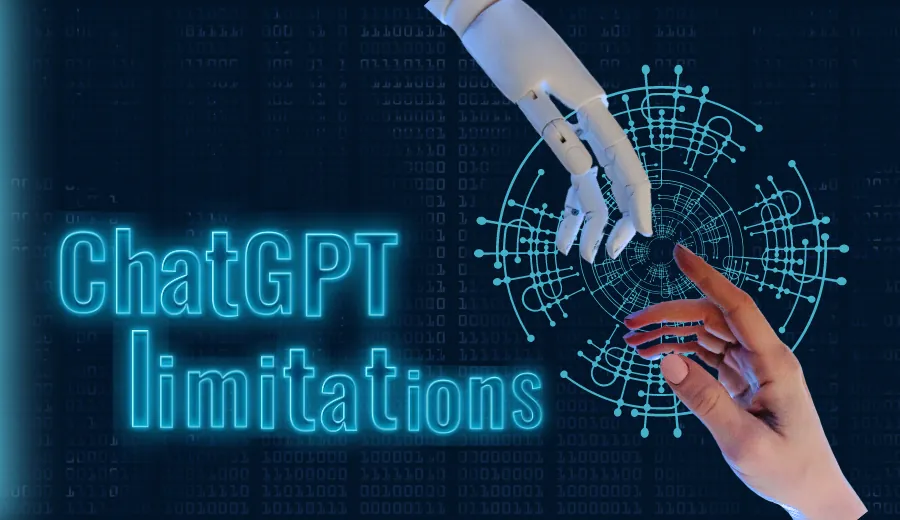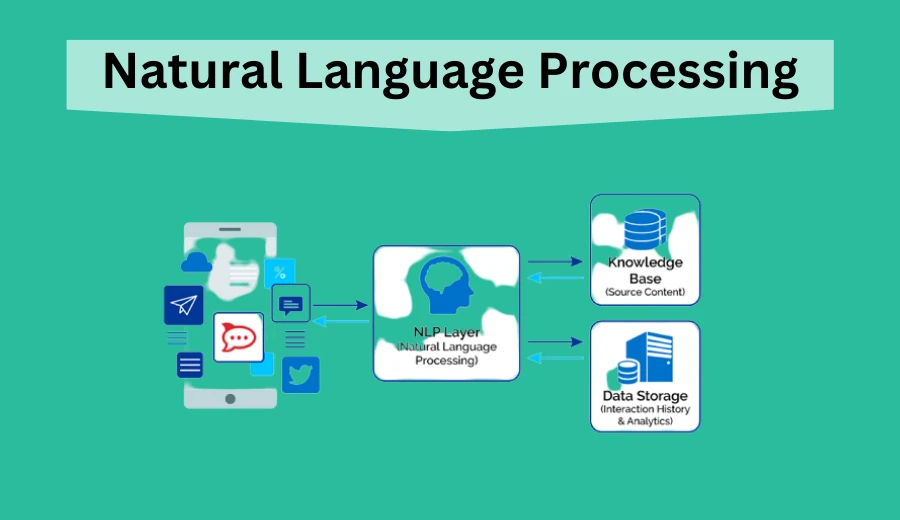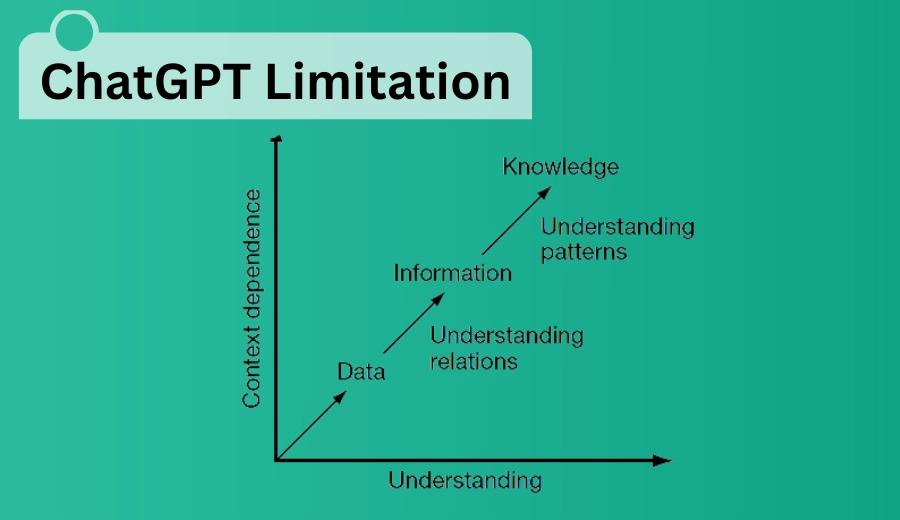ChatGPT Limitations: Quick Guide of AI Chatbot’s Constraints

Let’s take a closer look at ChatGPT, the fascinating world of AI chatbots, and what they can and can’t do. So, you know ChatGPT is pretty impressive, right? But it’s essential to understand ChatGPT limitations too. One thing to keep in mind is that ChatGPT might have a hard time keeping up with lengthy conversations, and sometimes, it might lose track of the context. It’s like when you’re chatting with a friend, and they forget what you were talking about earlier – a bit frustrating, right?
Another important thing to be aware of is that ChatGPT isn’t perfect; it can sometimes generate inaccurate or biased responses. We have to be mindful of this and make sure we’re not blindly trusting everything it says. Being a responsible user means keeping a close eye on its outputs and using it ethically.
Oh, and here’s something interesting – ChatGPT can sometimes be overly confident! It may give answers with unwarranted certainty, which can be misleading. Just like that one friend who’s always super sure about everything, even when they’re not entirely right.
But don’t worry! Understanding these ChatGPT limitations/constraints is essential for us to use AI chatbots effectively. By knowing their limitations, we can make informed decisions and improve our interactions with them. We can ensure that we’re getting the most out of this technology while being aware of its boundaries. So, let’s embrace these challenges and explore exciting ways to enhance the AI chatbot experience together!
How Do ChatGPT Limitations Affect?
I’ve observed that ChatGPT, like any other AI chatbot, has certain limitations that can affect its performance. In this article, I’ll delve deeper into these ChatGPT limitations and provide insights into how they impact ChatGPT’s performance.
1. ChatGPT’s Natural Language Processing Limitations

ChatGPT is a highly advanced AI chatbot that uses Natural Language Processing (NLP) to generate human-like responses. However, its NLP capabilities have some limitations. One limitation we encounter is ChatGPT’s difficulty in grasping sarcasm, irony, and other forms of figurative language. These subtle aspects of communication can sometimes go right over its virtual head, leading to responses that might be inaccurate, confusing, or even unintentionally humorous.
Moreover, ChatGPT’s understanding of context is where it faces another hurdle. While it can process individual sentences well, when it comes to maintaining context throughout a conversation, it can struggle. As a result, you might find the bot providing responses that seem irrelevant or don’t quite hit the mark, leaving you scratching your head or wondering, “Did it even get what I meant?”
These ChatGPT limitations are crucial to be aware of because they remind us that while ChatGPT is an impressive technology, it’s not infallible. It’s like having a super-smart language buddy who occasionally misses some of the more nuanced aspects of our conversations.
However, understanding these Chat GPT limitations empowers us to interact with ChatGPT more effectively. By being mindful of sarcasm, irony, and figurative language, we can frame our questions in a way that minimizes potential confusion. Additionally, providing more context in our interactions can help the chatbot deliver more relevant and accurate responses.
So, let’s keep in mind that while ChatGPT’s NLP capabilities are remarkable, it does have its limitations. Armed with this knowledge, we can have more engaging and productive conversations with this impressive AI chatbot!
2. ChatGPT Limitations in Privacy and Security
When we talk about AI chatbots like ChatGPT, we can’t overlook the crucial topic of privacy and security. It’s a top concern, and rightfully so!
ChatGPT itself takes privacy seriously and does not retain users’ data. That’s great news, right? But here’s the catch: depending on the context and specific use case, ChatGPT might utilize third-party APIs to generate responses. Now, while this integration with third-party APIs allows for more dynamic and informative responses, it can raise privacy and security eyebrows.
Here’s why!
When ChatGPT relies on third-party APIs, those APIs may end up collecting and storing users’ data, which poses a significant concern. Think of it this way – you’re having a chat with ChatGPT, and it pulls in information from a third-party source to answer your query. Now, that third party might be collecting your data in the process, which means you’re entrusting sensitive information to entities beyond the ChatGPT itself.
This can understandably make users feel uneasy, wondering where their data goes and how it’s being used. It becomes crucial for both developers and users to be vigilant about the APIs used, ensuring they comply with robust privacy and security protocols.
As responsible users, we should seek transparency from the AI chatbot’s developers about the integration of third-party APIs and data handling practices. By understanding how and when our data is being shared, we can make informed decisions about the level of trust we place in the AI chatbot.
Ultimately, while AI chatbots like ChatGPT bring immense convenience and capabilities, safeguarding user privacy and data security is an ongoing challenge. Awareness, transparency, and careful selection of APIs are key steps to ensure we strike the right balance between enjoying the benefits of AI and preserving our personal information. So, let’s stay informed and proactive in protecting our privacy while embracing the potential of AI chatbots responsibly!
3. Limited Understanding of Complex Queries
Let’s explore ChatGPT‘s capabilities when it comes to handling different types of queries.
ChatGPT is undeniably impressive in its ability to respond to a diverse array of questions. You can chat about various topics, from general knowledge to everyday trivia, and it will do a remarkable job of providing insightful responses. However, like any technology, it does have its limitations, especially when dealing with complex or highly technical queries.
Imagine you’re delving into the realm of advanced calculus and decide to put ChatGPT to the test by asking it some intricate calculus-related questions. You might find that the responses it gives may not be as in-depth or accurate as you’d hoped. That’s because ChatGPT’s understanding is not as proficient in handling extremely specialized and complex subjects.
The reason behind this chat GPT limitation lies in the nature of the data it has been trained on. While ChatGPT has been exposed to an extensive range of information from the internet, it might not have encountered the deep and nuanced knowledge needed for fields like medicine, engineering, or law. Consequently, its responses might lack the depth and precision required for such highly specialized subjects.
As a result, while ChatGPT can certainly be an excellent tool for general inquiries and learning about various topics, it might not be the best choice for more demanding professional fields. In those cases, it’s always recommended to consult experts or specialized resources that can offer accurate and comprehensive information.
However, don’t let this ChatGPT limitation overshadow the incredible versatility that ChatGPT brings. For everyday conversations, general knowledge, or seeking insights into common subjects, it’s an invaluable asset. And hey, who knows, in the future, AI technology might evolve even further, closing the gap in these specialized subjects. So, let’s appreciate ChatGPT for what it excels at while being mindful of its constraints. By understanding ChatGPT limitations, we can use it wisely and leverage its power in the right context, ensuring a more enriching experience for ourselves and those around us.
4. Inability to Display Visual Content
ChatGPT is a master of words, capable of generating insightful and informative text-based responses to a wide range of queries. However, it does have its blind spot – it’s unable to display visual content, like images or videos. So, while it can describe things in text form, it falls short when it comes to providing actual visual aids.
Imagine a scenario where you’re trying to troubleshoot a technical issue, say with your computer or a gadget. Visual aids play a crucial role in such situations, as they can help pinpoint the problem and guide you through the necessary steps for resolution. Unfortunately, ChatGPT won’t be able to show you a screenshot or a diagram to illustrate the process, making it less effective in this particular context.
This ChatGPT limitation can also be noticeable in fields like art, design, or architecture, where visuals play a central role. Trying to explain a complex artistic concept or design idea solely through text can be challenging, and ChatGPT’s inability to display images can hinder the effectiveness of such discussions.
To work around this ChatGPT limitation among other ChatGPT limitations, you can use ChatGPT in conjunction with other tools that offer visual support. For example, if you’re troubleshooting a technical issue, you can use ChatGPT to get some initial guidance and then turn to online tutorials or videos that provide the visual aids you need. Moreover, if you’re particularly interested in generating images, OpenAI has its separate AI Image generator tool called DALL E 2 for image generation.
5. Dependence on Data and Context
As a machine learning-based model, ChatGPT’s performance heavily relies on the data it is trained on. During its training, it analyzes vast amounts of text data from the internet, which helps it develop an understanding of language patterns, semantics, and common responses. However, here’s the catch – if the data used for training is biased or incomplete, it can lead to biased or inaccurate responses from ChatGPT.

For instance, if the training data disproportionately represents one perspective or fails to encompass diverse viewpoints, ChatGPT might inadvertently exhibit the same biases in its answers. As responsible users, it’s crucial to be aware of this ChatGPT limitation and treat ChatGPT’s responses with a critical eye, especially when dealing with sensitive or controversial topics.
Moreover, context plays a pivotal role in ChatGPT’s responses. It relies on the flow of conversation to provide relevant answers. If the conversation goes off-topic or lacks clear context, ChatGPT may struggle to generate appropriate responses. For instance, if you abruptly change the subject or ask a question without providing essential details, ChatGPT may not have enough information to offer a satisfactory reply.
Think of it like talking to a friend – if they lose track of the conversation’s context, they might give a response that doesn’t quite match the current discussion. Similarly, ChatGPT’s dependency on context means that crafting clear and concise questions helps it provide more accurate and relevant answers.
Despite these ChatGPT limitations, it remains an impressive AI tool with vast capabilities. Understanding its reliance on data and context allows us to use it effectively and make informed decisions when seeking information or assistance.
6. ChatGPT Limitations in Multilingual Support
ChatGPT is undoubtedly a polyglot AI, capable of understanding and generating responses in multiple languages. It’s incredible to witness its versatility across linguistic boundaries. However, there are certain ChatGPT limitations when it comes to seamless multilingual support.

When a user switches between languages during a conversation with ChatGPT, it can indeed create confusion for the AI model. Just like when we’re talking to someone, switching between languages mid-sentence or mid-conversation can be challenging for them to follow. Similarly, ChatGPT’s understanding might falter when dealing with mixed-language interactions, leading to responses that may not be as relevant or coherent as expected.
Furthermore, ChatGPT’s multilingual capabilities are not limitless. Its proficiency is constrained by the languages it has been trained on. While it can handle numerous languages, it may not cover every language in existence. The quality of its responses in a specific language also depends on the amount and quality of data available for that language during its training.
For instance, ChatGPT may be exceptionally skilled in English, but its proficiency in rarer or less commonly spoken languages might be limited due to the lack of sufficient training data. In such cases, its responses may not be as accurate or refined as they are in more widely supported languages.
To make the most of ChatGPT’s multilingual support, it’s essential for users to keep their interactions consistent within a single language, providing clear context for the AI model. Additionally, for more specialized or less common languages, users should be aware that the quality of responses may vary.
7. Potential for Bias and Misinformation
Another significant limitation of ChatGPT among other ChatGPT limitations is its potential for bias and misinformation. ChatGPT learns from vast amounts of data available on the internet. However, the internet is not free from bias, and neither are the texts that populate it. If ChatGPT is trained on biased data, it may inadvertently reflect and perpetuate those biases in its responses. This can lead to skewed or unfair answers, reinforcing stereotypes or discriminating against certain groups.
Moreover, the sources ChatGPT uses to generate responses play a crucial role in the accuracy and reliability of its information. If it relies on unreliable or unverified sources, it may end up providing misinformation to users. This misinformation can range from innocuous inaccuracies to potentially harmful advice in fields like medicine, law, or finance.
The consequences of such biases and misinformation can be severe. Users may make decisions based on the information provided by ChatGPT, not realizing that it’s flawed or misleading. This can lead to detrimental outcomes, especially in critical areas where accuracy is paramount.
To address these limitations of ChatGPT, it is vital for developers and users to take a proactive approach. Developers of AI models like ChatGPT must ensure that the training data is diverse, representative, and thoroughly vetted to reduce bias. They should also implement measures to verify the credibility of sources used by the model for generating responses.
On the user’s end, being critical and cautious is crucial. Double-checking information from reputable sources is a good practice, especially for important decisions or matters requiring expert advice. While ChatGPT can be an invaluable tool for information retrieval and learning, it’s essential to approach it with a discerning mind.
8. ChatGPT Limitations in Emotional Intelligence
While ChatGPT excels in generating human-like responses, it indeed lacks emotional intelligence, which is an essential element of human communication.
Emotional intelligence involves the ability to recognize, understand, and respond to emotions in oneself and others. It enables humans to empathize, show compassion, and adapt their communication accordingly. However, ChatGPT operates solely on data and patterns and doesn’t possess emotions or empathy.
This ChatGPT limitation becomes evident in scenarios where emotional intelligence is crucial, such as mental health support or crisis management. For instance, if someone reaches out to ChatGPT seeking emotional support during a challenging time, it can’t genuinely understand their emotions or provide empathy in the way a human counsellor or friend would.
Additionally, ChatGPT’s lack of emotional intelligence might lead to responses that unintentionally come across as cold or insensitive when addressing emotionally charged topics. This can potentially worsen the emotional state of the user, especially if they are looking for understanding and emotional connection.
Understanding and responding to emotions appropriately are crucial in mental health support, counselling, and crisis intervention. In such scenarios, trained human professionals with emotional intelligence can provide the empathy, compassion, and emotional support that individuals need.
That said, ChatGPT can still play a valuable role by providing information and directing users to appropriate resources. It can assist in offering practical guidance and resources related to mental health, while still acknowledging its limitations in emotional understanding.
Final Thoughts
ChatGPT is an advanced AI chatbot that has many benefits. However, it also has some limitations that can impact its functionality. By understanding these ChatGPT limitations and implementing the appropriate strategies, you can ensure that they are getting the most out of ChatGPT. Whether it’s combining ChatGPT with other technologies, training it on custom data, or integrating human assistance, there are many ways to overcome ChatGPT limitations and enhance its functionality.
Albert Haley
Albert Haley, the enthusiastic author and visionary behind ChatGPT 4 Online, is deeply fueled by his love for everything related to artificial intelligence (AI). Possessing a unique talent for simplifying complex AI concepts, he is devoted to helping readers of varying expertise levels, whether newcomers or seasoned professionals, in navigating the fascinating realm of AI. Albert ensures that readers consistently have access to the latest and most pertinent AI updates, tools, and valuable insights. Author Bio


